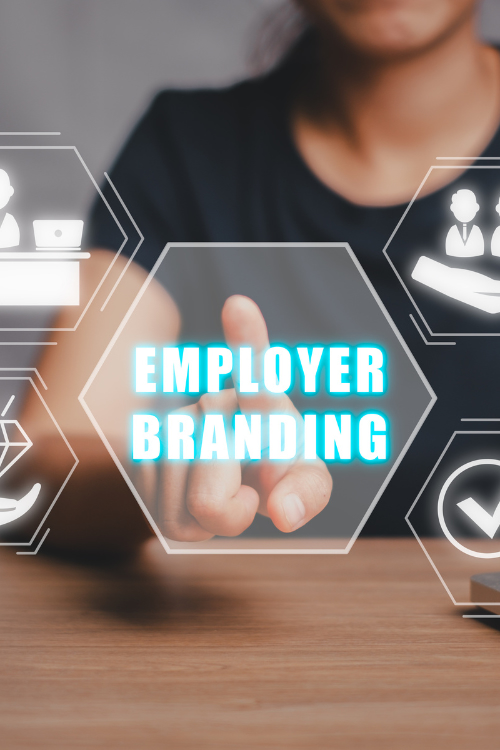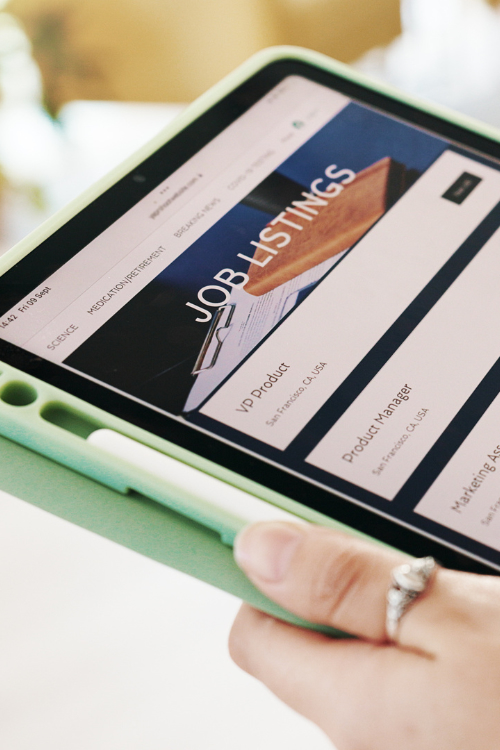The demographic change is unstoppable - our society is ageing faster and faster. It is therefore more important than ever to utilise the economic potential of older employees. PwC has created the "Golden Age Index" for this purpose: This provides a valuable benchmark that compares how well countries are integrating employees aged 55 and over into their workforces. This index not only shows the significant untapped potential of older workers, but also specifically highlights that Germany could ensure a long-term GDP increase of around 151 billion euros if it could raise its employment rate for the over 55s to Swedish levels. But how can we best integrate this valuable human potential? We address and answer this question today in this article.

The main issue with the integration of older employees
The integration of older employees entails several challenges. However, one of the biggest difficulties is adapting to new technological developments. Digitalisation and AI send their regards. Many older employees feel particularly overwhelmed by this - especially by the speed at which this digital train is racing. As a result, this creates a feeling of insecurity and fear of making mistakes. This uncertainty also makes older employees reluctant to use new technologies or take part in digital training courses. And ultimately, this results in lower productivity - and possible isolation within the team.
The consequences for companies
There is also an overarching problem: the loss of valuable expertise and experience. And this will hit companies and the economy as a whole extremely hard. Older employees bring with them decades of experience, extensive industry knowledge and often contacts that are invaluable for solving complex problems and training younger employees. Especially in times when mentoring is in high demand again. Because Gen Z is also insecure. Not digitally, but in terms of communication - Gen Z often lacks general knowledge, which means they sometimes don't have the confidence to speak to older employees. Not to mention skills such as critical thinking, resilience and stress tolerance. If older employees are not integrated appropriately, it will inevitably lead to a reduction in the company's competitiveness.
There is also a risk that older employees will become demotivated due to prejudices and a lack of support within the company. This ensures increased staff turnover and a loss of expertise and knowledge.
Challenges and opportunities
Integrating older employees presents many challenges - but also opportunities. As we have now discovered, older employees often need more time and support to familiarise themselves with new technologies. This requires patience and targeted training measures. At the same time, there is an opportunity for older employees to contribute their extensive experience and knowledge to digitalisation and thus promote innovative solutions. After all, this skill is at the top of the World Economic Forum's list (see Fig. 2).
TÜV Nord concludes that the creation of a new failure culture is crucial. Older employees must have the feeling that mistakes are allowed and are seen as learning opportunities. This requires open communication and a culture of trust within the company. Such a culture of error can help to reduce the fear of new technologies and increase the willingness to participate in digital training. In general, we Germans also lack an American culture of "fail fast, fail forward", which would not only benefit older employees.
Another critical element is the promotion of knowledge transfer. Older employees have an extensive network and valuable contacts that can be of great benefit to the company. This knowledge can be passed on effectively through mentoring programmes and mixed-age teams. Practice shows that the working atmosphere and communication are often better in teams with a mixed age structure, which leads to higher productivity and satisfaction in terms of employee satisfaction. Next, let's dive a little deeper into possible solutions.

Possible solutions
Leaders play a central role and need to be trained and sensitised accordingly. They should be able to recognise the special needs of older employees and respond to them appropriately. This also includes promoting respectful behaviour and combating age discrimination within the company.
Another important approach is the introduction of flexible working time models. Older employees often have family commitments or health needs that require flexible working hours. In times of hybrid and remote work, this is no doubt easy for most companies to implement. This also significantly increases the satisfaction and productivity of older employees.
The ergonomic design of the workplace also plays a role. This includes suitable lighting, ergonomic furniture and a comfortable room temperature. Such adjustments help to reduce the physical strain on older employees and optimise their ability to work.
And last but not least: Targeted training programmes will help older employees improve their digital skills and adapt better to technological changes. This can be supported by individual training plans and age-appropriate learning methods. Practical experience shows that older employees are also highly motivated to undergo continuous further training.
Case study – BMW
An example of the successful integration of older employees is BMW's "Today for Tomorrow" programme.
The company launched the programme to proactively address current challenges. As part of this programme, special work systems and adapted work structures were introduced, including ergonomically optimised workstations and facilities for active and passive recreation in the workplace, such as sports and rest areas.
BMW has recognised that older employees bring with them valuable experience and knowledge that is of great benefit to the company. By adapting working conditions and providing targeted support for these employees, BMW has been able to significantly improve the performance and satisfaction of its older workforce. In one particular project, which focussed specifically on the BMW production line, the results were impressive: productivity on the production line increased by 7% within a year – even though the line was staffed exclusively by older employees.
Conclusion
The integration of older employees is not only a social responsibility, but above all an economic necessity. The first baby boomers will retire as early as 2023. Companies that recognise and utilise the potential of their older employees will benefit from their extensive experience and knowledge. Above all, they also retain expertise within the company.
With targeted measures and open communication, companies can create an inclusive working environment in which older employees can make valuable contributions. And want to. To achieve this, a culture of trust and appreciation must be created in which mistakes are seen as learning opportunities and the transfer of knowledge is encouraged. Flexible working time models, ergonomic workplaces and a corporate culture that welcomes older employees are ways of successfully integrating them.
FAQs on the integration of older employees
Q: Why is the integration of older employees important?
A: Because they bring valuable experience and extensive industry knowledge that is crucial for solving complex problems and training younger colleagues. An age-diverse workforce also improves the working atmosphere and productivity.
Q: What are the challenges of integrating older workers?
A: The main problems are new technological developments and overcoming age discrimination. Older employees often need more time and support to familiarise themselves with digital tools and sometimes feel insecure. However, this uncertainty also applies to Gen Z.
Q: What measures can companies take to better integrate older employees?
A: Companies should introduce flexible working hours, ergonomic workstations and targeted training measures. An open error culture and mentoring programmes help to promote knowledge transfer.
Q: How can leaders support older employees?
A: Leaders should be sensitive to the needs of older employees, break down prejudices and promote respectful communication. Training on the integration and management of mixed-age teams is also important.
Q: Are there successful examples of the integration of older employees?
A: Yes, BMW has successfully introduced flexible working hours, ergonomic adjustments and facilities for active and passive recovery in the workplace with the "Today for Tomorrow" programme, which has led to higher productivity and lower absenteeism.










.png)




